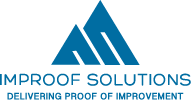The holy trinity of productive meeting rooms
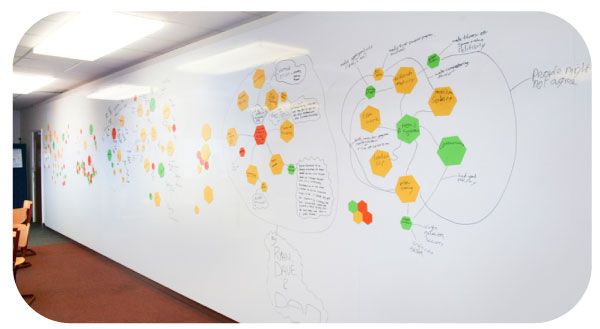
As a consultant, you spend a lot of time in meeting rooms. Being a Lean consultant, I try to spend as much time as possible on the “Gemba”, aka the place where actual value is added, aka the work floor. Nevertheless, meeting rooms remain a necessity. For hardcore Lean thinkers, call it an incidental activity, if you must. Think about trainings, brainstorm sessions, Kaizen workshops, and Value Stream Mappings. Having spent so much time in meeting rooms myself has inspired me to write this article.
Now, everyone knows there are productive meetings, and … well … not so productive meetings. There are many interesting things to say about what makes a meeting productive, and I will address this topic as well in a later stage. But first, I want to take a step back, and focus on the actual room: what makes a meeting ROOM productive? The answer comes in 3 practical tips. Consider it a Maslov hierarchy of meeting room needs…
Level 1) Climate
It still astonishes me that many meeting rooms today are gigantic migraine breeders. Therefore, for all you meeting room designers/architects out there, get the basics right:
- Fresh air… oooh the air… it’s what we breathe… it contains oxygen … and it makes us happy!
- (Natural) light, with easy to handle shutters and/or dimmers
- Controlled temperature, with heaters close to the floor, and airco at the ceiling. Basic physics: hot air goes up, cold air goes down. All-in one heater/airco’s that are build in the ceiling are blowing hot air down… that goes right up again! For that reason they have to blow thát hard that you end up in migraine city again. Plus, the environmentally cautious amongst you are worrying about the wasted energy… in other words… NOT very lean…
- Proper sound insolation, echo-free. You can avoid echo’s with everything that absorbs sound waves: curtains, carpet, plants, face ceilings, …
The more of these basic conditions that are met, the happier and productive meeting participants will be.
If they are not met, consider it an investment to GET as much as possible of them met. ROI might be hard to track, but then again, you’re not going to track the ROI of money spent on toilet cleaning, are you? It just makes good ol’ sense!
Level 2) Board space
Now here’s a sight I see a lot. I come in a meeting room, which meets all or most of the level 1 criteria. Ok … basic needs… check! Then I explore the room further, and I inspect the walls. And I see …
- All sorts of certificates and awards in shiny frames
- Corporate policy posters
- Corporate Slogans, buzz words
Basically walls that scream no touchy!
The following 3 pictures I have found searching for “modern meeting rooms”
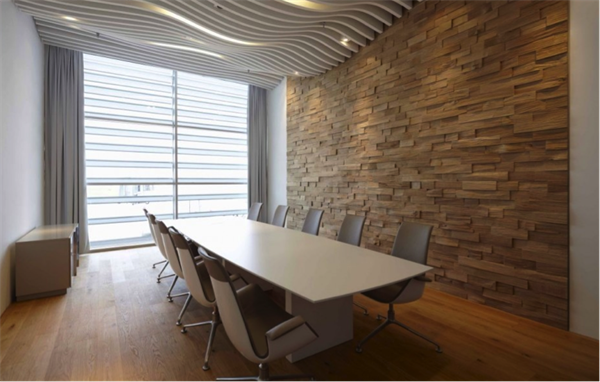
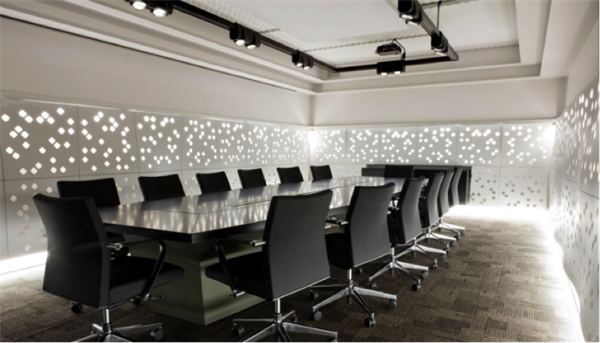
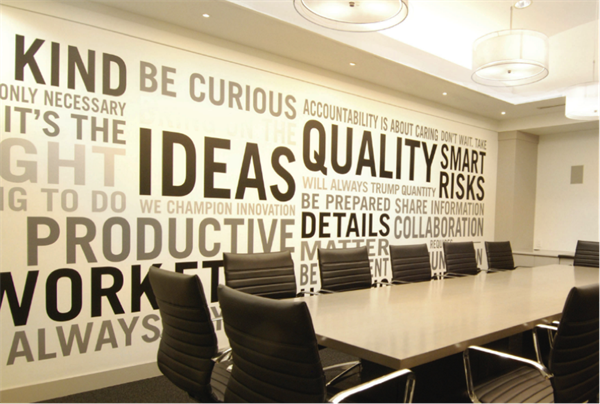
Fancy! But, what is missing?
In my humble opinion: white boards, black boards, glass dry-erase boards, cork walls, flipcharts, … basically any surface that you can WRITE on or at least attach stuff to.
The value that is added during a meeting lies 100% in cooperation and communication. Otherwise, why physically meet? It has happened to me many times that the creative process of a process improvement meeting is bottlenecked by not having enough physical place to visualize the actual process!
So from now on, don’t think white boards any more, think even bigger: think WHITE WALLS!
I am not kidding, you can actually turn an entire wall into one gorgeous, massive whiteboard. Just Google for “Whiteboard paint”, or even better, “thinking wall”. I promise you will see your productivity go up!
Level 3) Pixels
Now we get a little technical. Besides board space, you also want to project something. We are living in a digital world after all… When shopping for a (new) beamer or flat screen, think pixels! Pixels are those little dots that build your screen. They are expressed in 2 dimensions: number of pixels wide and high. For example, 1024x768px tells that your screen is built out of 1024 dots in width and 768 dots in height.
What’s the rule of thumb? Same as Level 2: the more, the better!
Why? Because it happens way too often that en entire excel sheet doesn’t fit on the screen, and you constantly have to scroll back and forth.
Or you insist on having everything on the screen, but you have to zoom out so much that nobody can read it any more, or at least you get a headache from squinting your eyes. Or, what if you want to show … let’s go crazy … an excel sheet AND a Powerpoint slide side by side on the same screen? Or a digitized Value Stream Map that took 4 meters of thinking wall (see level 2) to draw?
You get the drill, you want you projector or TV to project as many little dots as possible. A 600x800 screen is NOT going to do the trick, an Ultra HD 3840x2160 screen probably is. Of course there many in-between sizes as well.
I admit that the last category is not cheap, but if you can afford it, please do so!
ROI can be calculated like this:
- from now on, watch out for meeting room situations where the presentation could go smoother IF you had a bigger screen.
- Try to estimate the time that could be gained in hours (or eye doctor appointments avoided-> squinting your eyes is NOT good for you!)
- Multiply the potential time gain by the number of meeting participants
- Multiply this by the number of such meetings there are in that room in a year… from experience I’d say at least 50. (If not, you have too many meeting rooms!)
- Now multiply this number by the average hourly wage of your meeting participants
You’d be surprised!
To sum up, if you want to create a productive meeting room environment, invest in the right things: those that assist the creative/intellectual activity that meetings are meant for. Invest in
1) Climate
2) Board space
3) Pixels
Expensive furniture and fancy wall decoration are nice to haves, or might be adding value if you have to show that you have a lot of money to spend. But don’t forget, they do NOT add value to the actual meeting process
Next week I will write about what makes actual meetings productive
By Stefaan Claes, Consultant at Improof Solutions
